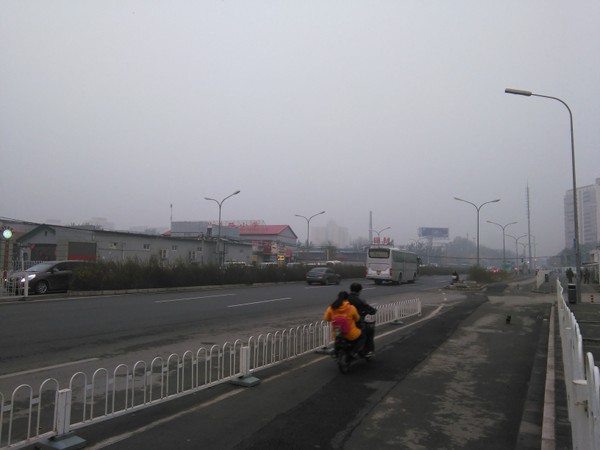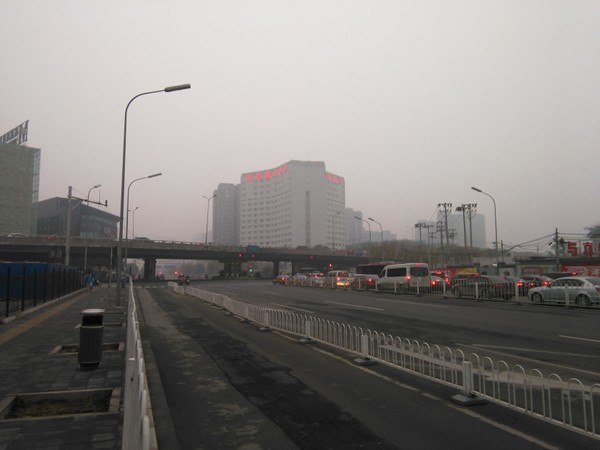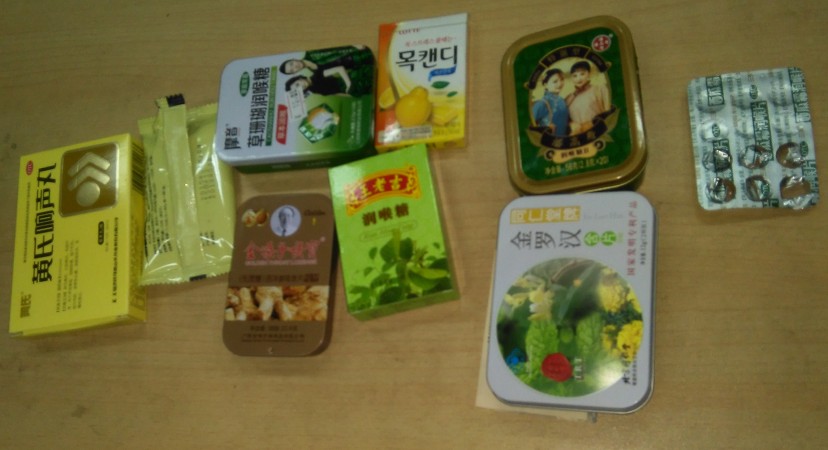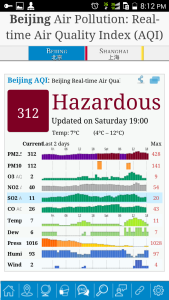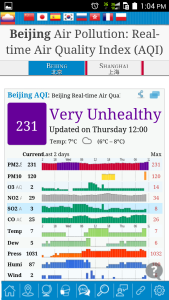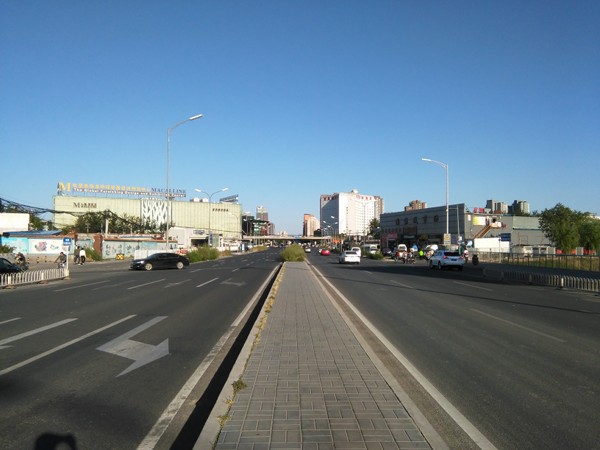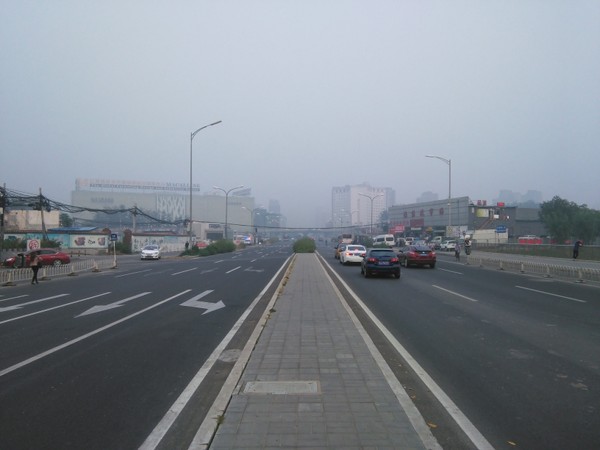We had our first snow about a week ago which means that Beijing has beaten most parts of Canada to winter weather. Most of the leaves have fallen off of the trees and the dutiful elders that are employed by the city to clean them up have been busy. Skies were blue and the air fresh until about November 7th, and that’s when the dreaded smog hit again.
Like any other smog attack, it was, at first, just a faint smell, as if somebody was having a bonfire down the road. Then the skies turned grey before completely blotting out the sun. Not long after, there were reports that Shanghai was inundated with heavy smog too, and that it would last for about a week, maybe more.
Two days into this recent smog attack, I would suffer my annual throat infection due to the density of the smog. Most Chinese people will point to the fact that I wear short sleeve T-shirts most of the time and that’s why I got sick. But it’s as if they can’t see the dense smog that has been settled over Beijing for the last week or so. I’ve never been one to check the air quality index (AQI, (which is used to measure the amount of pollutants hanging around in the air)) but the reports of a week-long smog attack had me interested… and a tad concerned. By the time I had checked the AQI it was over 280, then climbed to over 300 by this past weekend. We had gone maroon. Beijing’s air was considered “hazardous”. No shit. It wasn’t until Monday night that I started wearing a mask thinking that the weather wouldn’t blow over any time soon. And then by Tuesday lunch time I had lost my voice.
As a result, I’ve amassed quite the collection of Chinese drugs. Since the pharmacists thought I had a throat infection, she sold me some medicine that I was supposed to take after a meal. I wasn’t sure what I was buying and completely unsure how to describe my symptoms without my voice. I was looking for some lozenges, such as Halls or whatever the Chinese equivalent is (and I know they exist but apparently they’re sold out), but each package I bought didn’t produce the satisfactory and necessary burn to numb my vocal chords. It wasn’t until I got to my afternoon class that one of my students gave me some powerful lozenge and that seemed to do the trick. In the end, I had some 6 or 7 packages of Chinese drugs at my disposal, only two of which really worked.
For those not familiar with the AQI, namely, those folks who live in countries that either don’t burn coal for power or heat, the AQI measures the amount of pollutants in the air. It’s something that China is rather shy about but can’t really deny any more. It’s just gotten so bad. Pollutants include PM 2.5 (fine particulate matter, produced by cars and, wait for it, coal burning!), PM 10 (respirable particulate matter), NO2 (nitrogen dioxide), SO2 (sulfur dioxide), CO (carbon monoxide), and O3 (ozone). On “Beijing Blue” days, the AQI will be somewhere under 100 but on regular “foggy” days (it’s not really fog, it’s smog, which I tried to explain the difference to my students), it’s near 200 or higher which, according to the scale used to measure this, is “very unhealthy”. At least it’s not regularly over 300, that would mean it’s hazardous.
What’s causing all of this smog? The major problem, it seems, is that China burns coal to produce heat and power throughout the winter months. In true “central heating” fashion, the heaters were turned on at the beginning of November for some buildings and the rest followed shortly after, and that meant the factories in the south needed to crank up their coal-burning.
It’s not just heat, however, it’s the massive industrial machine that is China, the same industrial machine that produces a lot of the stuff we like to buy cheap. I’ve written about this topic before.
On top of that, it’s been drizzly, perhaps a true fog has settled upon Beijing because the pavement is damp. Although this means some of the crap is being taken out of the air, the downside is that any precipitation is most likely still harmful for your health. In Canada, we’d pay no attention to catching snowflakes or rain with our tongues. Now? I try to run in between the rain drops and avoid it if at all possible. No wonder so many of these buildings look shabby from the outside: the amount of grime falling on them during these wet smoggy days ruins the look.
So what’s a person to do?
Aside from wearing a mask on the really bad days, I’ve been looking into buying an air purifier for my apartment, if only to stifle the amount of dirt I’m breathing in. Moving is an option, as Beijing is an optional destination for me, even though my job is here at the moment. Finally, the thought that crosses my mind most is the idea that this heavy smog is the price that China and its citizens pay for their current role as the world’s centre of cheap labour. All those cheap nicknacks, shoes and what not are all contributing to this dense smog. It’s not just the cars on the road.
Finally finally, although, people are quick to censure China for its heavy pollution, the fact remains that it really doesn’t have much of an option at the moment. Most Westerners wouldn’t agree with using nuclear power either as that’s considered more “dangerous” and would point to hydro power instead, which ignores the downside of setting up dams and, simply, there isn’t enough water in China to power its population. The really bad thing about coal burning is that you can see the emissions. If it were clear then it wouldn’t look so bad but its presence is seen, felt, smelled and tasted.
If anything, this is the interesting thing about living in Beijing at the moment: how will the country and its people respond to this health and environmental crisis?
